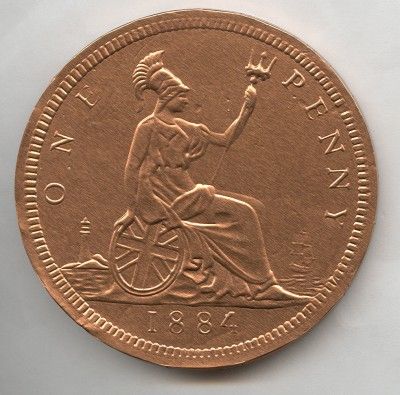Three Outside Up Candlestick Pattern
Contents:


Each candle ought to open below the day past’s open, ideally in the middle worth vary of that previous day. While the headstone doji can be found at the end of a downtrend, it is extra frequent to be discovered at the end of an uptrend. Although the gravestone doji is in style, it suffers from the identical reliability issues as many visible patterns. Many candlestick patterns exist, but engulfing lines and Doji are the most popular and accurate for bearish and bullish trends. This candlestick pattern consists of two bullish candles with a gap in them.
Bullish Harami: Definition in Trading and Other Patterns – Investopedia
Bullish Harami: Definition in Trading and Other Patterns.
Posted: Sun, 26 Mar 2017 00:36:12 GMT [source]
Opening a Gravestone Doji Trade A simple trigger is the low of the candlestick. Once a candle closes below this level, you can open a short position. On the image above, you see a sketch which shows the exact moment when you should short the stock after identifying a gravestone doji. If you see a bullish reversal pattern, then the prior trends will be bearish and vice versa. Strength is represented by a green or bullish candle, and weakness by a red or bearish one.
Bearish Engulfing
The hanging man reveals that promoting interest is beginning to increase. In order for the pattern to be valid, the candle following the hanging man must see the value of the asset decline. Fusion Mediawould like to remind you that the data contained in this website is not necessarily real-time nor accurate.
The Three Inside-Up Pattern consists of three candlesticks, indicating a bullish reversal. The first is a long bearish candle followed by a small bullish candle in the range of the first candlestick. The third candlestick is a long bullish candlestick that confirms the reversal. This indecision pattern shows that the market is neither bullish nor bearish.
- The first one is red and the other two consecutive angles are green.
- If a bearish candle forms the next day, traders can enter a short position with a stop-loss at the high of the second candle.
- The hammer pattern occurs in case of a price rise despite frequent selling pressures.
- While the candlestick patterns discussed above provide useful insights, these signals are only sometimes accurate.
This acts as a sort of a confirmation of the bearish trend reversal. The third candlestick chart should be a long bearish candlestick confirming the bearish reversal. A bearish tweezer candlestick is formed which looks like the continuation of the ongoing downtrend.
Long wicks indicate that there was a lot of price movement throughout the time period. With the third candle, one gets further confirmation that the market may be experiencing a reversal in its trend. This is because the security continues to show gains, with the price now being well above the boundaries of the first candle. The third candle completes the bullish candlestick that is described as ‘outside day.’ After all three candles are observed, usually the trading day may be coming to a close. Bullish confidence has increased which sets off any buying signals as the asset has closed at a new high with the third candlestick. It’s easy to see that prices have nowhere to move but upward, allowing you and any other traders wise enough to recognize this pattern the chance to maximize profits.
Bearish Counterattack
The second candlestick chart displays a long bearish candle that totally engulfs the first one, indicating that the bears have returned to the market. If a bearish candle forms the next day, traders can enter a short position with a stop-loss at the high of the second candle. Among candlestick patterns, patterns that include three candlesticks are held in high regard among the candlestick pattern traders. Both three outside up and three outside down patterns are reversal patterns.
- In a bear market, the market moves down and creates a long bearish candle.
- If a bearish candle forms the next day, traders can enter a short position with a stop-loss near the high of Hanging Man.
- I shall also be sharing courses on IPOs, mutual funds, stocks trading and other core areas of investing crisply and clearly.
- Another multi-candlestick pattern, Bullish Engulfing, is formed post a downward trend, thus indicating a bullish reversal.
The third three outside candlestick pattern candle must close below the second bearish candle. This is an essential feature of the three outside down patterns. Secondly, there should be a small red candlestick down the trend which may turn out to be the first candle of this pattern. Hence, this pattern will start with a red candle which is a part of the existing trend and tries to take the market lower. The body of the candle, on the other hand, stays modest, which could indicate a slowdown in buying enthusiasm. Finally, the second candle opens ‘gap up,’ indicating the bulls’ attempt to push prices farther higher.
However, the body of the candle remains small, which can be construed as an indication of a slow down in the buying interest. The second candle opens ‘gap up’ signifying the bulls’ effort to push the prices further upward. Three successive candlesticks form the three outside down pattern, which usually appears during a bullish trend. The movement of these candles always indicates whether or not a trend reversal is imminent. Three successive candlesticks form the three outside up pattern, which usually appears after a bearish trend.
This candlestick chart has a long bearish body with no upper or lower shadows which shows that the bears are exerting selling pressure and the markets may turn bearish. Three White Soldiers Pattern Three white soldiers is a bullish candlestick pattern that is used to predict the rever… A Dragonfly Doji is a type of candlestick pattern that can signal a potential reversal in price to the downside or upside, depending on past price action. It’s formed when the asset’s high, open, and close prices are the same. The dragonfly doji seems like a “T” and it’s fashioned when the high, open and close of the session are all close to the identical.
The pattern’s first candle will be black, signifying a downward trend. This resulted in the formation of bearish pattern and signifies that seller are back in the market and uptrend may end. It is made up of two candlesticks, the first of which is bullish and the second of which is bearish.
Hammer Pattern
Continuation patterns are an indicator to analysts to follow an existing trend, whereas reversal patterns signal traders to enter or exit a trade before the start of a trend. This multi-candle pattern forms after an upward trend that indicates a bearish reversal. The first and second candlesticks should be of the Harami candlestick pattern.
This multi-candlestick pattern forms post an upward trend that indicates a bearish reversal. Made of 3 candlesticks – the first a bullish one, the second a Doji, and the third a bearish one. The first candle has a continued upward trend, the second one a Doji indicating market indecision, and the third one a bearish candle that shows the reversal taking place. But the second candle should be completely out of the real bodies of the first and third one. The three insides up is a multi-candlestick pattern that forms post a downward trend.
Technical Classroom: How to read Three Outside Up & Three Outside Down candle stick patterns
A single candlestick pattern, Hammer, is formed at the end of the downward trend and signals a bullish reversal. The real candle body is small and located at the top, with a lower shadow that is more than twice the real body. The psychology behind this formation is that when the prices opened, the sellers pushed down the price. But when the buyers came into the market, they pushed the prices up and closed the trading session to more than the opening prices. This results in the formation of a bullish pattern and signifies that buyers took back the market. The Shooting Star pattern is formed when the upward trend ends and gives the bearish reversal signal.
Such a downtrend reversal can be accompanied by a potential for long positive aspects. That mentioned, the patterns themselves do not assure that the development will reverse. Investors ought to all the time verify reversal by the following price motion before initiating a commerce. When the cross bar is at the high of the shadow and there’s no upper shadow, it is called a Dragonfly Doji, though some name it an Inverted Gravestone. A hanging man candlestick occurs during an uptrend and warns that costs might begin falling.
Abandoned Baby Patterns
This pattern is similar to the Doji showcasing an indecisive market. The main difference between the two is that the real body of the spinning top is larger as compared to the Doji. The first and second candlesticks should have a Bearish Engulfing candlestick pattern relationship. At the end of an upswing, a Shooting Star forms, signalling a bearish reversal. This resulted in the formation of a bearish pattern, indicating that sellers have returned to the market and the uptrend may be coming to an end. Because the two closing prices are the same or nearly the same across the two candles, forming a horizontal neckline, the pattern is called a neckline.
A Flicker of Light: Candlestick Reversal and Continuation Patterns – The Ticker Tape
A Flicker of Light: Candlestick Reversal and Continuation Patterns.
Posted: Tue, 04 Apr 2023 07:00:00 GMT [source]
ShareHoldingScreen stocks by changes in shareholding by promoters, FPI/FII, mutual funds and DII. Customer retention is vital, and we ensure to provide value to the customer through our courses. We believe that the proper knowledge shared with the users will be a successful marketing option; it brings the potential audience to learn more about trading.
Inside Days: Definition, Trading Strategy, Examples, Vs. Outside – Investopedia
Inside Days: Definition, Trading Strategy, Examples, Vs. Outside.
Posted: Sat, 25 Mar 2017 20:27:57 GMT [source]
Candlestick charts can reveal quite a bit of information about market developments, sentiment, momentum and volatility. The patterns that kind within the candlestick charts are indicators of such actions and reactions available in the market. The two candlesticks should have alternating colors with the primary confirming the current development and the second indicating a weak point in the development. The reliability of these patterns improve when the first candlestick is has a large actual physique whereas the second candlestick has a short real body. We looked at five of the more popular candlestick chart patterns that signal buying alternatives.
The third and final candle, which indicates three outside up, must also be white. This candle, however, should close higher than the second candle. The only difference between spinning top and doji is in their formation, the real body of the spinning is larger as compared to Doji. The relationship of the first and second candlestick should be of the bearish Harami candlestick pattern. The pattern is called a neckline because the two closing prices are the same or almost the same across the two candles, forming a horizontal neckline. Traders can take a long position after the completion of this candlestick pattern.

The first day the small bearish candle may looks like a continuation of downtrend but its small size shows that the bearish signal is weakening. This is confirmed by the long bullish candlestick formed the next day. The larger candlestick tells a lot more about the market sentiments that the bull is taking over the bear and hence there is an increase in price movement. The first day the small bullish candle may looks like a continuation of an uptrend but its small size shows that the bullish signal is weakening. This is confirmed by the long bearish candlestick formed the next day. The larger bearish candlestick tells a lot more about the market sentiments that the bears is taking over the bulls and hence there is an decrease in price movement.


